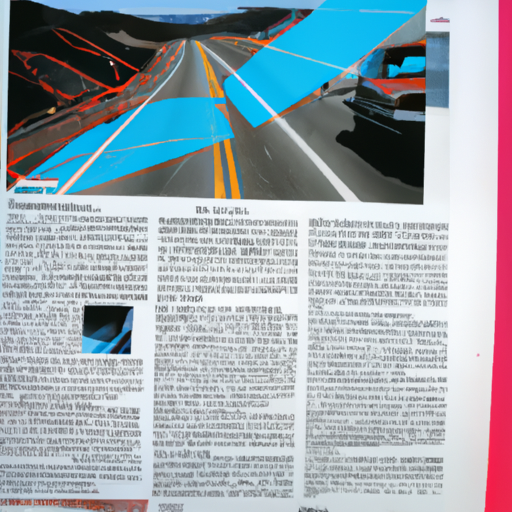In this article, we will explore some of the problems that have been reported with Toyota Safety Sense, a safety technology introduced by Toyota in their vehicles. From issues with the lane departure alert function to concerns about the adaptive cruise control, these problems have raised some concerns among Toyota owners. Let’s delve into the specific problems and their potential impact on driver safety.
Overview of Toyota Safety Sense
Explanation of Toyota Safety Sense technology
Toyota Safety Sense is a suite of advanced driver assistance systems (ADAS) developed by Toyota to enhance vehicle safety. These systems utilize a combination of sensors, cameras, and radars to detect potential dangers on the road and provide timely alerts or interventions to help prevent accidents. Toyota Safety Sense technology has been integrated into various Toyota models, offering a range of features for improved safety.
Benefits of Toyota Safety Sense
Toyota Safety Sense offers several benefits to drivers and passengers alike. By providing alerts and interventions, these systems can help mitigate potential collisions and reduce the severity of accidents. Some of the key benefits include:
Collision Mitigation: Toyota Safety Sense can detect pedestrians, other vehicles, and obstacles ahead, and alert the driver to potential collisions. In some cases, the system can even automatically apply the brakes to help avoid or minimize the impact of an accident.
Lane Departure Warning: This feature uses cameras to monitor lane markings and notifies the driver if the vehicle drifts out of its lane unintentionally. This helps prevent accidents caused by drowsiness, distraction, or inattention.
Adaptive Cruise Control: Toyota Safety Sense includes adaptive cruise control, which maintains a safe distance from the vehicle ahead and automatically adjusts the vehicle’s speed to match the flow of traffic. This promotes smoother and more efficient driving, reducing the risk of rear-end collisions.
Road Sign Assist: This feature uses a front-facing camera to detect and display relevant road signs, such as speed limits and stop signs, on the vehicle’s display. This helps drivers stay aware of the current road conditions and comply with traffic regulations.
Introduction of various Toyota Safety Sense versions
Toyota has introduced different versions of Toyota Safety Sense over the years, each with its own set of features and capabilities. These versions include:
Toyota Safety Sense P: This is the most advanced version of Toyota Safety Sense and is found in many Toyota models. It includes features like Pre-Collision System with Pedestrian Detection, Lane Departure Alert with Steering Assist, Automatic High Beams, and Dynamic Radar Cruise Control.
Toyota Safety Sense C: This version is designed for compact cars and includes features like Pre-Collision System, Lane Departure Alert, and Automatic High Beams.
Toyota Safety Sense 2.0: This is the latest iteration of Toyota Safety Sense and offers enhancements to the existing features, as well as the addition of new capabilities. It includes features like Lane Tracing Assist, Road Sign Assist, and Full-Speed Range Dynamic Radar Cruise Control.
While Toyota Safety Sense is known for its effectiveness in enhancing safety, there have been some concerns and issues that have been reported by Toyota owners. It is important to be aware of these problems to better understand the limitations and potential drawbacks of this technology.
Common Issues with Toyota Safety Sense
Accuracy and reliability concerns
While Toyota Safety Sense is designed to be accurate and reliable, there have been instances where the system has displayed inaccuracies. For example, some users have reported false warnings or false positives, where the system detects a potential danger that doesn’t actually exist. These inaccuracies can lead to driver confusion and reduced trust in the system.
In addition, there have been reports of the system failing to detect certain objects or obstacles, which can pose a safety risk. The accuracy and reliability of the system are vital for ensuring the overall effectiveness of Toyota Safety Sense in preventing accidents and protecting occupants.

False positive and false negative alerts
False positive alerts occur when the system erroneously detects a potential danger and issues a warning. These false alarms can be disruptive and may cause drivers to become desensitized and ignore legitimate warnings. On the other hand, false negative alerts occur when the system fails to detect an actual danger, potentially putting the driver and passengers at risk.
While false positive and false negative alerts can be frustrating, it is important to understand the challenges of designing and implementing ADAS systems. Striking the right balance between sensitivity and specificity is a complex task, and it is not uncommon for ADAS systems to occasionally misinterpret situations.
Limited functionality in certain driving conditions
Toyota Safety Sense may have limitations in certain driving conditions that can affect its functionality. Adverse weather conditions, such as heavy rain, fog, or snow, can potentially impact the system’s ability to accurately detect objects and obstacles. Similarly, low light conditions or driving at night may reduce the system’s effectiveness.
Furthermore, Toyota Safety Sense may have limitations on curved or winding roads. The system relies on the vehicle following visible lane markings, and if the markings are not clear or well-defined, it may not be able to provide accurate lane departure warnings or other functionalities.
Compatibility issues with other vehicle systems
Toyota Safety Sense may encounter compatibility issues when aftermarket accessories or non-Toyota components are installed in the vehicle. These accessories or components may interfere with the sensors or cameras used by the system, leading to inaccurate or malfunctioning readings.
It is important for Toyota owners to be aware of the potential compatibility issues and consult with authorized dealers or service centers before installing any aftermarket accessories or making modifications to their vehicles.
1. Accuracy and Reliability Concerns
Instances of system inaccuracies
While Toyota Safety Sense is generally reliable, there have been instances where the system has exhibited inaccuracies. Some users have reported instances where the system issued warnings for non-existent obstacles or failed to detect actual hazards. These inaccuracies can lead to confusion and reduce trust in the system’s capabilities.

Potential impact on overall vehicle safety
The accuracy and reliability of Toyota Safety Sense are critical for ensuring the overall safety of the vehicle and its occupants. Inaccurate or unreliable warnings can cause drivers to disregard legitimate alerts, potentially leading to accidents or injuries. It is essential for Toyota to address any concerns related to accuracy and reliability to maintain the effectiveness of their safety systems.
Recall campaigns and customer complaints
To address accuracy and reliability concerns, Toyota has initiated recall campaigns and software updates to improve the performance of Toyota Safety Sense systems. These measures aim to rectify any known issues and enhance the overall functionality of the ADAS technology. Additionally, customer complaints play a crucial role in identifying potential problems and prompting Toyota to take appropriate actions for improvement.
2. False Positive and False Negative Alerts
Examples of unnecessary or incorrect warnings
False positive alerts occur when Toyota Safety Sense erroneously detects a potential danger and issues a warning to the driver. This can happen in situations where there is no actual threat, such as when passing stationary objects or driving on roads with frequent changes in lane markings. These unnecessary warnings can be disruptive and may cause drivers to become desensitized to legitimate alerts.
Driver reactions and trust in the system
False positive and false negative alerts can impact driver confidence in the Toyota Safety Sense system. Frequent false alarms may lead drivers to question the system’s reliability and credibility, reducing their trust in its capabilities. This could result in drivers disregarding or ignoring valid warnings, potentially compromising their safety.

Contributing factors to false alerts
False positive and false negative alerts can occur due to various factors. Environmental conditions, such as poor lighting or adverse weather, can hinder the accurate detection of objects and movements by the system’s sensors. Additionally, imperfect lane markings or confusing road layouts can pose challenges for the system, leading to false alerts. Toyota continuously works on refining the algorithms and calibration of Toyota Safety Sense to minimize false alarms.
3. Limited Functionality in Certain Driving Conditions
Challenges in adverse weather conditions
Toyota Safety Sense may have limitations in adverse weather conditions, such as heavy rain, fog, or snow. Reduced visibility and obscured road conditions can impede the system’s ability to accurately detect obstacles, pedestrians, or lane markings. Drivers should exercise caution and be aware of these limitations when relying on the ADAS system in such conditions.
Performance issues in low light or night driving
Low light conditions or nighttime driving can pose challenges for Toyota Safety Sense. The system relies on clear visibility and well-defined lane markings for accurate operation. In situations where lighting is inadequate or lane markings are faded or obscured, the system may not function optimally. Drivers should be mindful of the system’s limitations and exercise extra caution during these conditions.
System limitations on curved or winding roads
Toyota Safety Sense utilizes lane detection technology that relies on visible lane markings to provide lane departure warnings and other features. However, on curved or winding roads where lane markings may not be as clearly visible, the system may have limitations. Drivers should be aware of potential inaccuracies and exercise caution when relying on the system’s functionalities in such situations.
4. Compatibility Issues with Other Vehicle Systems

Interference with aftermarket accessories
Toyota Safety Sense may encounter compatibility issues when aftermarket accessories, such as external cameras or radar detectors, are installed. These accessories may interfere with the sensors or cameras used by the system, resulting in inaccurate readings or malfunctioning of the ADAS technology. It is important for Toyota owners to consult with authorized dealers or service centers to ensure the compatibility of any aftermarket accessories with the safety system.
Integration challenges with non-Toyota components
Non-Toyota components or modifications made to the vehicle may introduce compatibility issues with Toyota Safety Sense. Changes to the vehicle’s structure, sensor placement, or wiring can potentially affect the accurate functioning of the safety system. Toyota owners should always consult with authorized dealers or service centers before making any modifications that may impact the ADAS technology.
Implications of incompatible systems on safety
Incompatible aftermarket accessories or non-Toyota components can compromise the accuracy and reliability of Toyota Safety Sense. This can have serious implications on the overall safety of the vehicle and its occupants. It is crucial for Toyota owners to prioritize the integrity of the safety system and ensure compatibility with any additional equipment or modifications.
Toyota Safety Sense Versions and Associated Problems
Toyota Safety Sense P
Toyota Safety Sense P is the most advanced version of the safety system available in many Toyota models. While it offers a range of advanced safety features, such as Pre-Collision System with Pedestrian Detection and Lane Departure Alert with Steering Assist, there have been reports of occasional inaccuracies and false alarms. Toyota has continually worked on improving the system’s performance through software updates and recalibrations.

Toyota Safety Sense C
Toyota Safety Sense C is designed for compact cars and includes features like Pre-Collision System, Lane Departure Alert, and Automatic High Beams. While it provides valuable safety enhancements, some users have reported occasional false alerts or delays in detecting potential hazards. Toyota is committed to addressing these concerns and ensuring the ongoing improvement of the system.
Toyota Safety Sense 2.0
Toyota Safety Sense 2.0 is the latest iteration of Toyota Safety Sense and offers an enhanced suite of features compared to its predecessors. This version includes Lane Tracing Assist, Road Sign Assist, and Full-Speed Range Dynamic Radar Cruise Control. While Toyota has made significant improvements with this version, it is important to note that occasional inaccuracies or limitations in certain driving conditions may still occur.
Known issues and improvements in each version
Toyota has actively responded to known issues and concerns related to different versions of Toyota Safety Sense. Through software updates, recalibrations, and continuous research and development, the company has aimed to enhance the accuracy, reliability, and overall performance of their safety systems. Drivers are encouraged to stay informed about any available updates or enhancements for their specific Toyota Safety Sense version.
Impact on Driver Experience and Confidence
Customer perceptions and satisfaction levels
The impact of Toyota Safety Sense problems can vary among drivers, and customer perceptions and satisfaction levels may be influenced by their personal experiences. Some drivers may have had positive experiences with the system, finding it reliable and effective in enhancing safety. However, for those who have encountered issues or inaccuracies, their satisfaction levels may be lower. Toyota actively engages with customers to address their concerns and improve their overall experience with Toyota Safety Sense.
Effect on trust in advanced driver assistance systems
Toyota Safety Sense plays a significant role in shaping drivers’ perceptions and trust in advanced driver assistance systems (ADAS) as a whole. If drivers encounter frequent issues or inaccuracies with Toyota Safety Sense, it may lead to reduced trust in not only the specific system but also in ADAS technology in general. To maintain and regain driver trust, Toyota works diligently to address any problems and improve the overall reliability and performance of their ADAS systems.
Driving behavior changes due to safety system concerns
When drivers experience issues or concerns with Toyota Safety Sense, it may impact their driving behavior and level of reliance on the system. Some drivers may become more hesitant to trust the system’s alerts or interventions, leading to increased manual control and decreased reliance on ADAS features. This change in driving behavior emphasizes the importance of continuous monitoring and improvement of safety systems to restore driver confidence and promote the desired safety benefits.
Toyota’s Response to Safety Sense Problems
Communication with customers and dealerships
Toyota prioritizes communication with customers and dealerships to address any problems or concerns related to Toyota Safety Sense. The company ensures that service centers, authorized dealers, and customers are kept informed about software updates, recalibrations, and enhancements. This open communication aims to address customer queries promptly and foster a positive and collaborative approach to resolving safety system issues.
Software updates and recalibrations
To improve the accuracy and performance of Toyota Safety Sense, Toyota regularly provides software updates and recalibrations. These updates are designed to address any known issues, enhance the system’s functionality, and optimize performance. Toyota owners are encouraged to stay up-to-date with the latest software releases and take advantage of these updates to ensure their safety systems remain current and effective.
Enhancements in newer vehicle models
Toyota is committed to continual improvement and has implemented enhancements in newer vehicle models to address safety system concerns. These enhancements incorporate feedback from customers, advancements in technology, and ongoing research and development efforts. Toyota owners considering purchasing a new vehicle are encouraged to explore the latest Toyota models to benefit from the most recent advancements in Toyota Safety Sense technology.
Conclusion
Evaluation of Toyota Safety Sense overall
Toyota Safety Sense is a comprehensive suite of advanced driver assistance systems that aims to enhance vehicle safety. While the technology offers numerous benefits, including collision mitigation, lane departure warning, adaptive cruise control, and road sign assist, there have been reported concerns and issues related to accuracy, false alerts, limited functionality in certain driving conditions, and compatibility with other vehicle systems.
Despite these challenges, Toyota has actively responded to known issues, initiated recall campaigns, offer software updates and recalibrations, and implemented enhancements to improve the overall performance and reliability of their safety systems. Key factors in evaluating Toyota Safety Sense should consider customer perceptions, satisfaction levels, and trust in advanced driver assistance systems.
Importance of ongoing monitoring and improvements
Ongoing monitoring and improvements are crucial for maintaining and enhancing the efficacy of Toyota Safety Sense. Continuous feedback from customers, rigorous testing, and proactive measures are essential in identifying and addressing any safety system concerns promptly. Toyota’s commitment to ongoing improvements demonstrates their dedication to delivering reliable and effective safety technologies that meet the expectations and needs of drivers.
Future outlook for Toyota’s safety technology
Toyota’s ongoing investment in research and development underscores its commitment to advancing safety technologies. As technology continues to evolve, Toyota is likely to introduce new iterations of Toyota Safety Sense with improved capabilities and expanded functionality. The future outlook for Toyota’s safety technology holds promise, with continued efforts to enhance accuracy, reliability, and overall driver experience in their pursuit of safer roadways.
